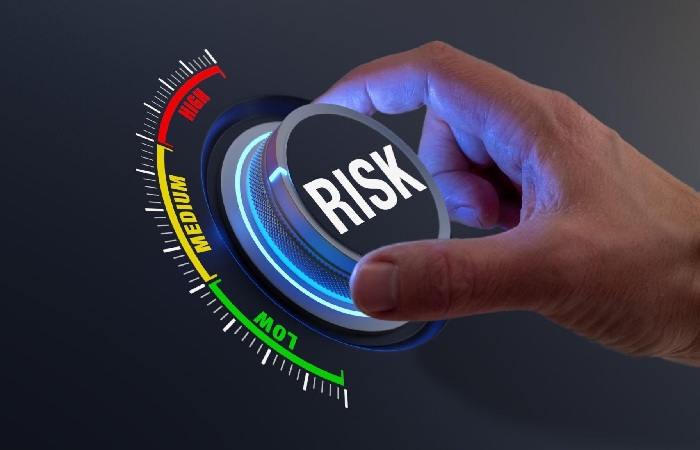Low-Risk Investments- With an economy grappling with high inflation, the Federal Reserve poised to raise interest rates and rising tensions over the conflict in Ukraine, 2022 promises to be an eventful year for investors. Therefore, investors must remain disciplined. Building a portfolio that includes some lower-risk assets can help reduce market volatility.
The downside is that by reducing risk, investors are likely to see lower returns over the long term. It can be fine if your goal is to preserve the principal and maintain a steady stream of interest income.
However, if you are looking for growth, you should consider investment strategies that align with your long-term goals. Even riskier assets like stocks have tranches (like dividend stocks) that reduce relative risk and offer attractive long-term returns.
To Consider for Low-Risk Investments
Depending on risk tolerance, several scenarios can occur:
Risk-free, you don’t lose a cent of your capital.
Certain Risks: It’s safe to say that you will break even or suffer a slight loss over time.
However, there are two catches: low-risk investments yield lower returns than you might find elsewhere with risk, and inflation can erode the purchasing power of money invested in low-risk assets.
If you only choose low-risk investments, you can lose purchasing power over time. For this reason, low-risk games are also a better short-term investment or a reserve for your emergency fund. In contrast, riskier assets are better suited for higher long-term returns.
Here Are The Best Low-Risk Investments:
- High Yield Savings Accounts
- Series I Savings Bonds
- Short-Term Certificates of Deposit
High Yield Savings Accounts
While not officially an investment, savings accounts offer a unsure return on your money. You can find the cheapest options by searching online, and you can get a little more bang for your buck if you’re willing to look at the fee tables and shop around.
Why invest: A savings account is completely safe because you will never lose money. Most funds are insured federally for up to $250,000 per account type per bank, so you can still be compensated even if the financial institution goes bankrupt.
Risk: Cash does not depreciate in dollar terms, although inflation can reduce its purchasing power.
Series I Savings Bonds
A Series I Savings Bond is a low-risk inflation-adjusted bond and will help protect your investment. If inflation rises, the interest rate on the bond will adjust upwards. But when inflation goes down, the obligation payment goes down as well. You can buy the Series I bond from TreasuryDirect.gov, operated by the US Treasury Department.
“The I-Bond is a upright option for increase protection because you get a fixed interest rate and add an inflation rate every six months,” says McKayla Braden, former senior adviser to the US Treasury Department, referring to an inflation premium. It is reviewed twice a year.
Why invest: The Series I bond adjusts its payment semi-annually based on the inflation rate. Given the high inflation in 2021, the bond pays a substantial yield. It will be adjusted higher if inflation also rises. Therefore, the bond helps protect your investment from increasing prices.
Risk: Savings bonds are guaranteed by the US government and are therefore considered a safe investment. However, keep in mind that once inflation falls, the interest payment on the bond will decrease.
If a US savings bond were redeemed five years ago, a penalty equal to the interest for the past three months would be charged.
Short-Term Certificates Of Deposit
- Bank CDs remain loss-proof in an FDIC-backed account unless you withdraw the funds early. To find the best rates, shop online and compare bank offers. With interest rates set to rise in 2022, it may make sense to own short-term CDs and then reinvest as interest rates rise. It would help if you avoided being a tie to CDs below the market for too long.
- An alternative to a short-term CD is a royalty-free CD, which allows you to avoid the typical prepayment penalty. It will enable you to withdraw your money and transfer it to a higher paying CD without the usual fees.
- Why invest: If you leave the CD intact until the end of the term, the bank agrees to pay you a fixed interest rate for the stated time.
- Some savings accounts pay higher interest rates than CDs, but these so-called high-yield accounts may require a large deposit.
- Risk: When you withdraw money from a CD early, you typically lose some of your earned interest. Some banks will also let you lose some of your capital, so reading the rules and checking the rates before buying a CD is essential.
- Also, if you look at a CD with a longer duration and overall rates go up, you’ll get a smaller return. To get a market interest rate, you have to pay off the CD, and you usually have to pay the penalty for doing so.
Low-Risk Investments Money Market Funds
Money market funds are pools of low-risk certificates of deposit, short-term bonds, and other investments pooled to spread risk and typically sold by brokerage firms and mutual fund companies.
Why invest: Unlike a CD, a money market fund is a liquid, which means you can usually withdraw your money without penalty.
Risk: Money market funds are generally pretty safe, says Ben Wacek, founder and financial planner at Guide Financial Planning in Minneapolis.


![Best Low-Risk Investments And More [2024]](https://www.treasurebiz.com/wp-content/uploads/2023/12/Low-Risk-Investments-1.webp)
Review Best Low-Risk Investments And More [2024].